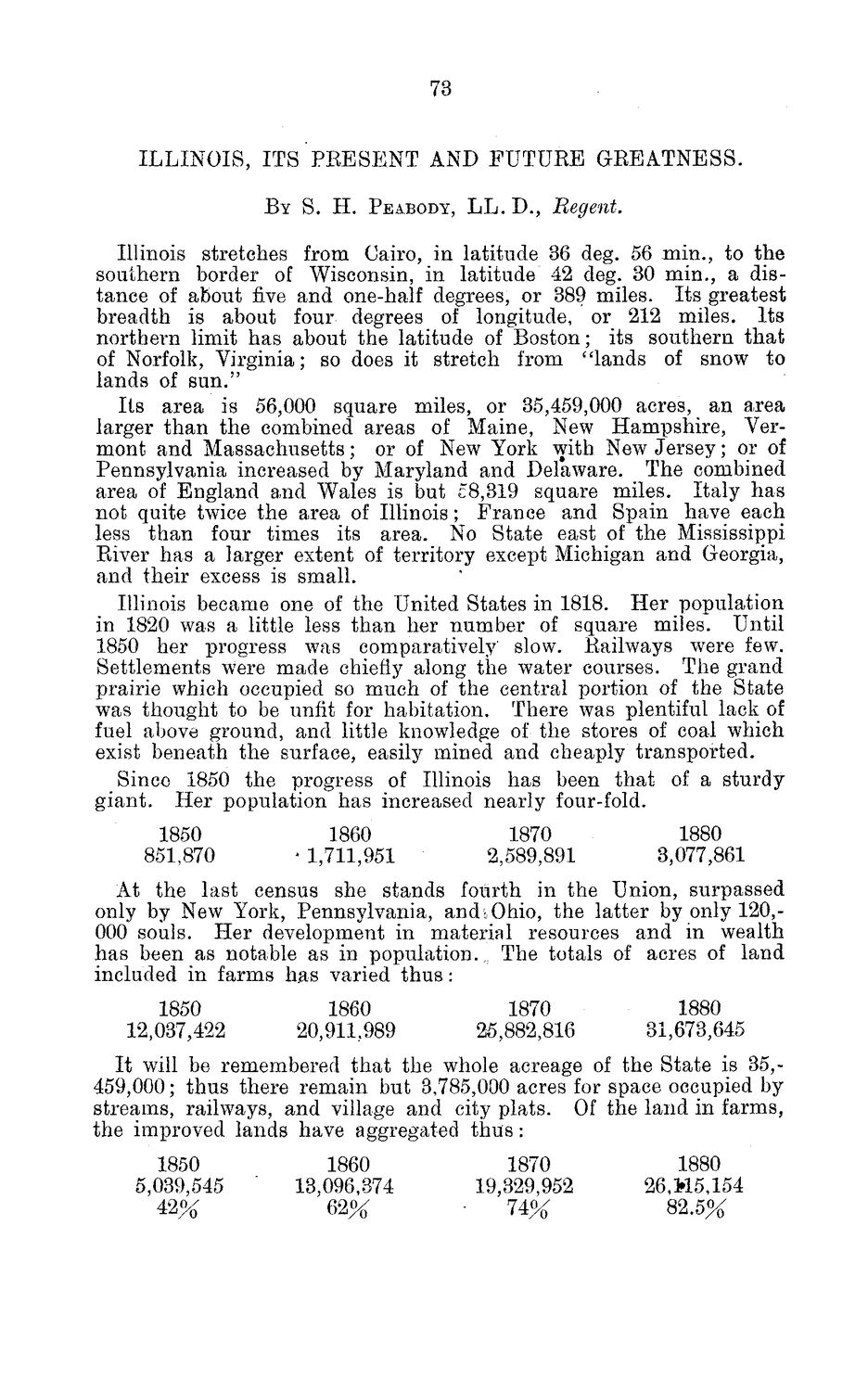| |
| |
Caption: Board of Trustees Minutes - 1884
This is a reduced-resolution page image for fast online browsing.

EXTRACTED TEXT FROM PAGE:
73 ILLINOIS, ITS PBESENT AND FUTURE GBEATNESS. BY S. H. PEABODY, L L . D., Regent. Illinois stretches from Cairo, in latitude 36 deg. 56 min., to the southern border of Wisconsin, in latitude 42 cleg. 30 min., a distance of about five and one-half degrees, or 389 miles. Its greatest breadth is about four degrees of longitude, or 212 miles. Its northern limit has about the latitude of Boston; its southern that of Norfolk, Virginia; so does it stretch from "lands of snow to lands of sun." Its area is 56,000 square miles, or 35,459,000 acres, an area larger than the combined areas of Maine, New Hampshire, Vermont and Massachusetts; or of New York with New Jersey; or of Pennsylvania increased by Maryland and Delaware. The combined area of England and Wales is but 58,319 square miles. Italy has not quite twice the area of Illinois; France and Spain have each less than four times its area. No State east of the Mississippi Eiver has a larger extent of territory except Michigan and Georgia, and their excess is small. Illinois became one of the United States in 1818. Her population in 1820 was a little less than her number of square miles. Until 1850 her progress was comparatively slow. Eailways were few. Settlements were made chiefly along the water courses. The grand prairie which occupied so much of the central portion of the State was thought to be unfit for habitation. There was plentiful lack of fuel above ground, and little knowledge of the stores of coal which exist beneath the surface, easily mined and cheaply transported. Since 1850 the progress of Illinois has been that of a sturdy giant. Her population has increased nearly four-fold. 1850 1860 1870 1880 851,870 * 1,711,951 2,589,891 3,077,861 At the last census she stands fourth in the Union, surpassed only by New York, Pennsylvania, andiOhio, the latter by only 120,000 souls. Her development in material resources and in wealth has been as notable as in population. The totals of acres of land included in farms has varied thus: 1850 1860 1870 1880 12,037,422 20,911,989 25,882,816 31,673,645 It will be remembered that the whole acreage of the State is 35,459,000; thus there remain but 3,785,000 acres for space occupied by streams, railways, and village and city plats. Of the land in farms, the improved lands have aggregated t h u s : 1850 5,039,545 42% 1860 13,096,374 62% 1870 19,329,952 74% 1880 26,M5,154 82.5%
| |